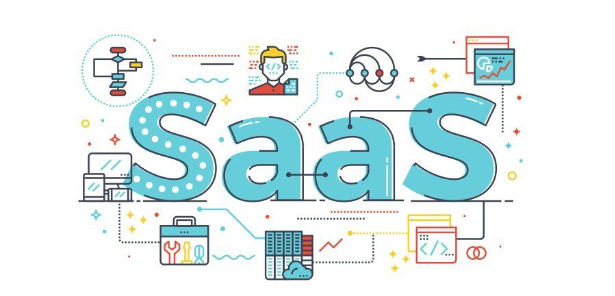Let’s be honest—your eCommerce customer experience can make or break your business.
In today’s digital marketplace, customers have endless options at their fingertips, and if you’re not delivering a seamless, personalized shopping experience, they’ll bounce faster than you can say “abandoned cart.”
But here’s the good news: improving your customer experience in eCommerce isn’t rocket science. It merely requires the right strategies, a customer-first mindset, and a little help from the experts (hint: that’s where Zavops comes in).
Ready to transform browsers into loyal buyers? Let’s dive into the strategies that actually work.
Why eCommerce Customer Experience Matters More Than Ever
The online shopping landscape has changed dramatically. Customers don’t just want products anymore—they want experiences. They expect websites to remember their preferences, checkout processes to be lightning-fast, and support to be available 24/7.
Here’s a reality check: if your customer journey isn’t smooth, your competitors are just one click away. That’s why focusing on customer experience optimization should be at the top of your priority list.
Map Out Your Customer Journey
Before you can improve your eCommerce customer experience, you need to understand it. Customer journey mapping helps you visualize every touchpoint—from the moment someone discovers your brand to post-purchase follow-ups.
Where do customers get frustrated? Which pages have high bounce rates? Is your checkout process more complicated than assembling IKEA furniture?
By identifying these pain points, you can create a smoother path to purchase. And trust me, your conversion rates will thank you.0
Personalization is Your Secret Weapon
Generic shopping experiences are so 2015. Today’s customers expect personalization at every turn—from product recommendations based on browsing history to email campaigns that speak directly to their needs.
Here’s how to nail eCommerce personalization:
- Use dynamic product recommendations based on browsing behavior
- Segment your email lists for targeted campaigns (and if you need help with this, consider hiring email marketing experts)
- Create personalized landing pages for different customer segments
- Leverage AI-powered chatbots that remember past interactions
When customers feel like you “get” them, they’re more likely to stick around—and buy.
Mobile Optimization Isn’t Optional
Here’s a stat that should wake you up: around 70% of mobile shopping carts are abandoned, primarily due to poor mobile user experience. If your site isn’t mobile-friendly, you’re literally throwing money out the window.
Make sure your mobile site has:
- Fast loading times (under 3 seconds)
- Easy-to-tap buttons and navigation
- Simplified checkout with autofill options
- Responsive design that looks great on all screen sizes
Remember, most of your customers are shopping from their phones while waiting for coffee or sitting on their couch. Make it easy for them.
Streamline Your Checkout Process
The checkout process is where dreams go to die—or where conversions happen. A complicated checkout is the number one killer of online sales.
Keep it simple:
- Offer guest checkout options
- Minimize form fields (do you really need their phone number?)
- Display progress indicators
- Provide multiple payment options, including digital wallets
- Show security badges to build trust
Every extra step you remove increases your chances of completing the sale.
Leverage Social Proof and User-Generated Content
Nothing builds trust faster than seeing real people love your products. Customer reviews, testimonials, and user-generated content are goldmines for boosting eCommerce conversions.
Research shows that 97% of online shoppers check reviews before making a purchase. That’s basically everyone.
Encourage reviews by:
- Sending post-purchase follow-up emails
- Offering incentives like discount codes
- Making it ridiculously easy to leave feedback
- Showcasing reviews prominently on product pages
- Sharing customer photos and videos on social media
Build an Omnichannel Experience
Your customers don’t just shop on your website—they’re on Instagram, browsing TikTok, checking emails, and maybe even visiting your physical store (if you have one). An omnichannel strategy ensures consistent, seamless experiences across all touchpoints.
This means:
- Enabling social commerce features
- Syncing inventory across channels
- Allowing customers to start shopping on one device and finish on another
- Creating consistent branding and messaging everywhere
When you meet customers where they are, you make their lives easier—and increase your chances of making a sale.
Invest in Customer Service Excellence
Great products get customers. Great customer service keeps them coming back.
Offer multiple support channels–live chat, email, and phone support. Better yet, implement AI-powered chatbots that can handle common questions 24/7. But here’s the key: make sure there’s always a way to reach a real human when needed.
Self-service options like comprehensive FAQs, video tutorials, and knowledge bases empower customers to find answers quickly without waiting for support.
Win Back Abandoned Carts
Cart abandonment is every eCommerce store’s nightmare, but it’s also an opportunity. Implement abandoned cart recovery strategies like:
- Automated email reminders within a few hours
- Personalized messages highlighting the items left behind
- Special discount codes to incentivize completion
- SMS reminders for extra touchpoints
Sometimes people just get distracted. A gentle nudge can bring them back.
Create Clear and Transparent Return Policies
Nothing kills trust faster than a sketchy return policy. Make yours crystal clear and customer-friendly. When shoppers know they can easily return items if needed, they’re more confident making purchases in the first place.
Display your return policy prominently and make the actual process simple. Even if it costs you a bit more in logistics, the long-term benefit of customer trust is worth it.
Use Data to Drive Decisions
Stop guessing and start knowing. Use analytics tools to track customer behavior, identify trends, and spot opportunities for improvement. Which products are most popular? Where do people drop off in your funnel? What devices do your customers use most?
Being data-driven means you can continuously optimize your eCommerce customer experience based on real insights, not hunches.
Gamify the Shopping Experience
Why should shopping be boring? Adding game-like elements—such as reward points, badges, challenges, and progress bars—makes the experience more engaging and fun.
Gamification increases customer engagement and encourages repeat purchases. Plus, it gives people a reason to come back beyond just buying stuff.
The Bottom Line
Enhancing your eCommerce customer experience isn’t about implementing every trendy feature—it’s about understanding your customers and removing friction from their journey. Focus on personalization, mobile optimization, seamless checkout, and exceptional customer service.
The strategies we’ve covered aren’t just theory—they’re proven tactics that drive real results. Whether you’re just starting out or looking to level up your existing store, improving customer experience should be your north star.
Ready to transform your eCommerce customer experience and skyrocket your conversions?
Let Zavops help you build a customer experience strategy that delivers results.
Frequently Asked Questions
How can I improve my eCommerce customer experience?
Focus on mobile optimization, personalize product recommendations, streamline your checkout process, provide excellent customer service, and use customer data to improve continuously. Start by mapping your customer journey to identify pain points and address them systematically.
Why is personalization important in eCommerce?
Personalization makes customers feel valued and understood, leading to higher engagement and conversion rates. When you show relevant products and content based on customer behavior and preferences, you create a more satisfying shopping experience that drives loyalty and repeat purchases.
What causes shopping cart abandonment?
The main culprits are complicated checkout processes, unexpected costs, mandatory account creation, slow loading times, and concerns about payment security. Additionally, poor mobile optimization and limited payment options contribute significantly to cart abandonment rates.
How does mobile optimization impact eCommerce sales?
Mobile optimization directly impacts your bottom line—70% of mobile carts are abandoned due to poor user experience. With most online shopping happening on mobile devices, a fast, responsive, easy-to-navigate mobile site is essential for capturing sales and reducing bounce rates.
What is omnichannel eCommerce?
Omnichannel eCommerce provides a seamless, integrated shopping experience across all channels—website, mobile app, social media, email, and physical stores. It allows customers to interact with your brand anywhere and ensures consistent messaging, inventory, and service quality across all touchpoints.






